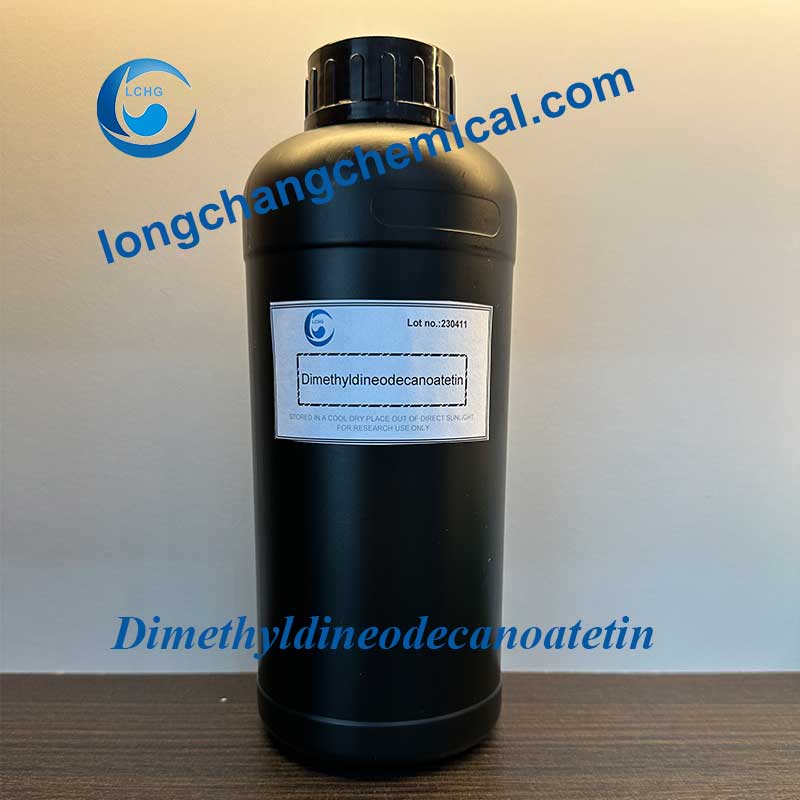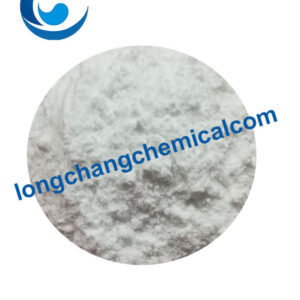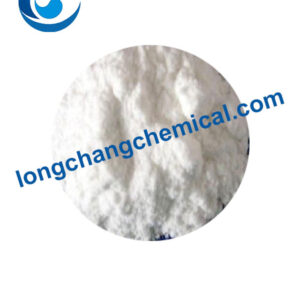Description
Dimethyldineodecanoatetin CAS 68928-76-7
Chemical Properties
Melting Point: -6°C
Boiling Point: 265.6°C at 760 mmHg
Flash Point: 153°C
Density: 1,14 g/cm3
Vapor Pressure: 0.00263mmHg at 25°CRefractive
Index: 1.47
Water Solubility: 16.27μg/L at 25℃
Dimethyldineodecanoatetin Usage
1. Dimethyldineodecanoatetin is used as an efficient catalyst in the manufacture of polyurethane foams, coatings, adhesives and sealants.
2. Dimethyldineodecanoatetin is used in two-component polyurethane, polyester, nitro paints, inks, hardening catalysts, etc. It has good oxidation resistance.
3. Dimethyldineodecanoatetin is used in the production of polyurethane plastics, polyurethane coatings, silicone rubber catalysts, catalysts and so on.
It has the highest catalytic activity of the organotin catalyst range, obtaining very short gel times and non-stick times. Its activity is similar to that of dibutyltin diacetate (DBTDA) but without the acetic acid odour or corrosiveness of DBTDA. It replaces DBTDL in many polyurethane foam systems with the advantages of low dosage and low cost. It has a lower freezing point than DBTDL and slightly better hydrolysis resistance. It can be used for fast curing cast and spray elastomers, can be used in room temperature curing polyurethane and silicone systems, and is particularly suitable for aliphatic polyurethane systems.
Other Name:
Dimethylbis[(1-oxoneodecyl)oxy]stannane
dimethyltin dineodecanoate
Dimethyldineodecanoatetin
Dimethyltin dineodecanoate
Dimethyltinneodecanoate
Contact Us Now!
If you need Price, please fill in your contact information in the form below, we will usually contact you within 24 hours. You could also email me info@longchangchemical.com during working hours ( 8:30 am to 6:00 pm UTC+8 Mon.~Sat. ) or use the website live chat to get prompt reply.
| Stannous Chloride anhydrous | 7772-99-8 |
| Dimethyltin Dichloride | 753-73-1 |
| Monobutyltin Oxide | 2273-43-0 |
| Dibutyltin Oxide | 818-08-6 |
| Tributyltin Oxide | 56-35-9 |
| Tetrabutyl Tin | 1461-25-2 |
| Butyltin Mercaptide | 26410-42-4 |
| Dibutyltin Diacetate | 1067-33-0 |
| Dibutyltin Dilaurate | 77-58-7 |
| Dibutyltin Maleate | 78-04-2 |
| Monobutyltin Trichloride | 1118-46-3 |
| Dibutyltin Dichloride | 683-18-1 |
| Tributyltin Chloride | 1461-22-9 |
| Butyltin Tris(2-Ethylhexanoate) | 23850-94-4 |
| Di-n-Octyltin Oxide | 870-08-6 |
| Dimethyldineodecanoatetin | 68928-76-7 |
| Octyltin Mercaptide | 26401-97-8 |
Polyurethane Catalyst Selection Analysis
There are two main purposes of catalyst use:
1, To make the reaction proceed in the direction we expect;
2, to regulate the reaction rate, shorten the reaction time and improve the production efficiency.
In polyurethane foam catalyst selection, polyurethane foam products are mainly synthesised from polyether, isocyanate, foaming agent, catalyst and so on. The main process of foam formation is generally considered as follows:
1, through physical methods and chemical methods in the polyurethane reaction system to produce foam, and let the foam uniformly dispersed in the reaction system, in which the main foaming method is the use of water and isocyanate production of carbon dioxide to foam.
2. The foam generation process requires the viscosity of the reaction system to increase in order to stabilise the foam from escaping.
3、When the foam formation reaches the desired number and size, the viscosity of the reaction system needs to continue to increase and even form a crosslinking system to stabilise the foam and shape it into a product.
In this case, we need at least two catalysts to regulate the reaction, one catalyst is to promote the reaction of isocyanate and water, that is to say, to promote the foaming reaction, usually choose amine catalysts; the other is to promote the reaction of isocyanate and polyether or alcohol, that is to say, the reaction of polyurethane molecule chain growth and cross-linking, usually choose metal catalysts. Therefore, in the process of polyurethane foam synthesis, we usually choose amine catalysts and organometallic catalysts to work together in order to produce synergistic effects to achieve the best results.
Organometallic catalysts
In polyurethane elastomers and adhesives, coatings, sealants, waterproof coatings, paving materials and other formulations, the traditional organotin and other organometallic catalysts are most commonly used, which are very effective in promoting the reflection of isocyanate group and hydroxyl group, but with the requirements of environmental protection, environmentally friendly organobismuth and zinc products are more and more commonly used.





